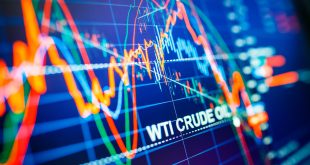Contemporary technologies are undoubtedly reshaping the financial assets and trading industry, and markets are undergoing major transformations due to emerging technologies. This report explores some of the key areas of influence of the most prominent technologies in today’s world.
Blockchain and supply chain transparency:
Blockchain technology ensures secure and transparent transactions that are more resistant to tampering attempts. In the context of traditional supply chains, blockchain allows transactions to be tracked in real time, reduces the chances of falling into fraud, and thus contributes to strengthening trust between trading partners.
Internet of Things (IoT):
IoT devices collect and transmit data across supply chains and this data can improve inventory management, forecast demand, and improve logistics efficiency.
5G Communications:
Ultra-fast 5G networks enable seamless connectivity between devices, enhancing supply chain visibility and enabling real-time decision-making.
Growth opportunities for artificial intelligence corporates:
Artificial Intelligence has become a game changer in trade and trading because it has opened new horizons for automated trading operations. Artificial Intelligence simplifies paperwork, customs clearance and compliance checks, reduces manual human errors and speeds up the completion of commercial transactions.
Predictive Analytics:
AI algorithms analyze historical data to predict market trends, demand fluctuations, and supply chain disruptions, and companies can make informed decisions based on these insights.
Personalized customer experiences:
Chatbots and AI-driven recommendation engines improve customer interactions, leading to improved customer relationships and repeat business.
Positive Impact:
Efficiency: Technologies such as artificial intelligence, automation, and blockchain streamline processes and reduce costs and time.
Innovation: New technologies foster innovation and create new business models and revenue sources.
Sustainability: Sustainable technologies (such as renewable energy and circular economy practices) are consistent with global environmental goals.
Negative Impact:
Security Risks: Cybersecurity threats are increasing with digital transformation. Protecting sensitive business data is critical.
Job Loss: Automation may lead to job losses in certain sectors. Reskilling and upskilling are essential.
Dependence: Over-reliance on technology can be risky. Diversification is key.
Looking to the future and practical advice:
When we look to the future, one should consider several steps, perhaps the most important of which is cooperation; as industry players must collaborate to create systems and standards that are applicable and compatible with interoperability mechanisms.
Ethical AI efforts: Consideration should also be given to developing AI responsibly, addressing biases and ensuring transparency, as well as training and education, i.e. educating stakeholders and relevant people about the benefits and risks of emerging technologies.
Major disruption is on the horizon
The next big disruption in trading, and trading in general, will be driven by technology, so as a thought leader, you will need to embrace these rapid developments and changes, actively participate in all relevant discussions and closely monitor the shaping of the narrative of our future. Digital technologies have a major impact on different traded assets, so let’s explore some of the key areas:
Digital assets and cryptocurrencies:
Bitcoin, Ethereum, and other cryptocurrencies are entirely digital and based on blockchain technology, and their value is all affected by technological developments, regulatory changes, and market sentiment.
Non-Fungible Tokens (NFTs): These unique digital assets represent ownership of digital art, collectibles, and other digital content and their prices fluctuate significantly, based on demand levels, artistic trends, and technological adoption.
Stocks and bonds:
Technology Stocks: Companies operating in the technology sector (such as Apple, Amazon, Meta and
Special Purpose Acquisition Companies (SPACs): These companies have gained popularity due to technology-driven disruptions to traditional IPOs and use technology to identify merger targets and streamline the listing process.
Commodities and supply chain technologies:
Agricultural commodities: Technologies such as precision agriculture, IoT sensors, and blockchain technology are enhancing supply chain transparency. These affect prices and trading dynamics.
Commodities: Efficient mining, recycling, and tracking technologies affect supply and demand, affecting prices.
Forex:
Algorithmic Trading: AI-based algorithms execute forex trades based on technical indicators, news sentiment, and market data. These technologies affect exchange rates.
Digital currencies: Central bank digital currencies and stablecoins are reshaping cross-border payments and forex markets.
Bonds and fixed income:
Blockchain Bonds: Issuers are exploring blockchain-based bonds for transparency, efficiency, and automation. These could revolutionize bond trading.
Ownership Tokens: Tokens powered by blockchain technology represent partial ownership in real estate. PropTech innovations impact property values and rental markets.
Broader investment horizons:
Smart contracts automate derivatives transactions, reducing counterparty risk and settlement times. As for options and futures, technology certainly enables real-time pricing, risk management, and execution, and investors should remember well that the impact of technology extends Beyond specific assets, they contribute to shaping market structures, trading processes and investor behavior and as technology evolves, so does the global trading and investment arena.
 Noor Trends News, Technical Analysis, Educational Tools and Recommendations
Noor Trends News, Technical Analysis, Educational Tools and Recommendations





